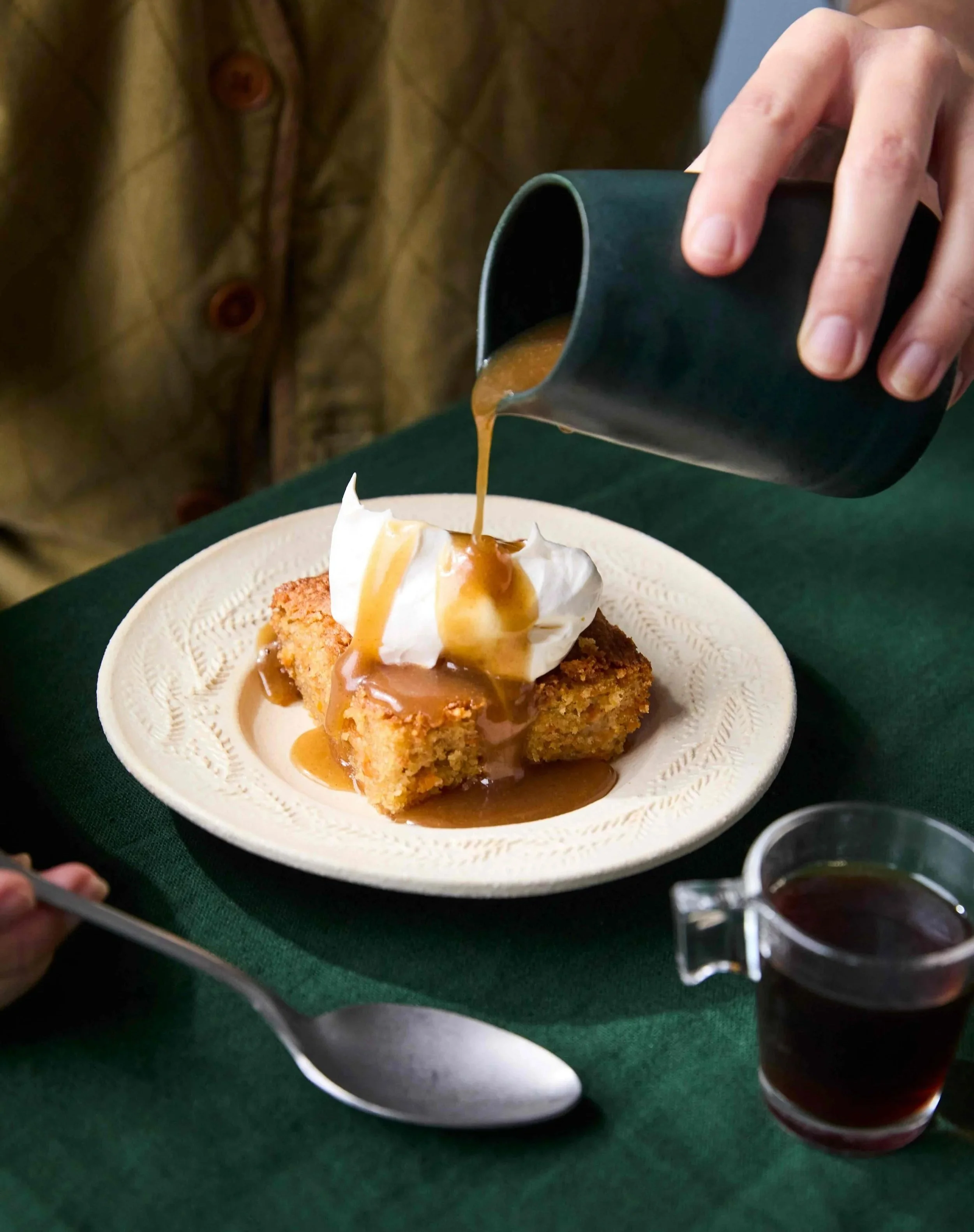Apricot and almond pie with burnt honey
Apricots. We wait all darned year for the things yet, despite their cheery appearance and promise of juicy, sun-shiny flavour, they’re often incredibly disappointing. And it’s not their fault. Unless you live in a stone-fruit orchard, or have access to one, apricots are destined to be a bit hit and miss by the time they arrive at the fruiterer. Make that mainly ‘miss’. That’s because they don’t ripen once picked, they merely soften, with no development of sweetness, flavour or general juicy yumness possible once they’ve exited the Mothership. Prone to bruising, they don’t travel well either so tend to be picked while still on the firm, underripe side. Refrigeration is just the kiss of death for their amazing sweet-tangy flavour too and, throw in that their season is rather fleeting, it’s no wonder we hang out all year for them, then feel bloody cheated when they taste like, well, nothing.
The good news is that apricots do perk up a bit when you cook them, especially using techniques like roasting or grilling, scattered first with a little sugar and maybe a few dobs of butter. Roasting always concentrates flavours and apricots cooked this way make a fab companion to vanilla ice cream, some yoghurt, a ripe softer cheese like brie, even a pork roast or grilled chops. They’re also great baked into a cake, tart or pie like this totally delicious one. Where we used S.R flour instead of plain in the pastry because SOMEBODY WASN’T PAYING PROPER ATTENTION. But we left our error in place because, counterintuitively, it worked quite well. And may even help the cause of those challenged in the patisserie department because self raising flour doesn’t seem to shrink and carry on like plain flour does but maybe we are just imagining that. So do report back if this is fake news as we’re many things at L.S.C. but food scientist is not one of them.
We haven’t tried it but this tart would be nice in autumn with plums, pears or apples and, as it makes quite a few serves (you could eke out 10), it goes rather a long way. Unless, like us, you make it first thing in the morning (we made the pastry the day before and chilled it overnight), then start dishing it out for breakfast.
Makes 1 x 25cm pie
200g softened unsalted butter
100g caster sugar
175g (½ cup) honey
3 eggs
11/2 tsp vanilla extract
110g (¾ cup) self-raising flour
110g ground almonds
8 apricots, cut into quarters
few sprigs rosemary (optional)
Pastry
225g (1½ cups) self raising flour
100g unsalted butter, chopped
100g caster sugar
1 large egg, beaten well
1-2½ tbsp iced water
For the pastry, place the flour in a large bowl, add the butter then, using clean hands, rub it in until the mixture resembles breadcrumbs. Alternatively, you can do this using a food processor. Stir in the sugar, then add the beaten egg and 1 tbsp of the water. Using your hands, mix until a coarse, firm dough forms, slowly adding a little extra cold water as necessary. Turn out onto a lightly floured surface, press to form a smooth, flattened disc, then wrap in plastic wrap and refrigerate for 1-2 hours until firm, or chill overnight.
Roll the pastry out on a lightly floured work surface to a circle about 35cm across. Gently roll the pastry around your rolling pin, then carefully unroll it over a 3.5cm deep, 25cm pie tin with a removable base. Gently press it in to fit, then trim the edge even. Chill for 30 minutes.
Meanwhile, heat the oven to 200C. Line the pastry shell with baking paper, then fill with baking beads or rice. Bake for 15 minutes, then remove the paper and beads and bake for another 5-6 minutes until the base feels dry and the edges are light golden. Remove from the oven and reduce the temperature to 180C.
While the pastry bakes, use electric beaters to beat the butter, sugar and 60g (about 3 tbsp) of the honey until light and fluffy. Add the eggs, one at a time, beating well between each. Beat in the vanilla extract. Sift in the flour, add the ground almonds, then stir until smooth. Add to the pie shell, smoothing the top even, then scatter over the apricot wedges, pressing them in gently. Scatter over a few rosemary leaves, then bake for about 50 minutes or until a cake tester withdraws clean when inserted in the middle. Cool to room temperature.
Bring the remaining honey to the boil in a small saucepan over medium-high heat. Cook for 4-5 minutes or until it turns deep golden and you can smell it caramelising. Remove from the heat then add about 1 tbsp cold water to stop it cooking, swirling the pan to combine. Cool, then spoon the burnt honey over the pie. Scatter with a few fresh rosemary leaves if you like and serve.











